Sytrus and Harmor Microtuning Guide
Sytrus revolutionzed the concept of "everything's an envelope!". This means you can apply a pitch envelope to almost everything in Sytrus' independent operators at a varying pitch strength, too. Didier Dambrin would later take his innovative concept and migrate it over to Harmor, as a result both Sytrus and Harmor can be fed custom pitch key mappings.
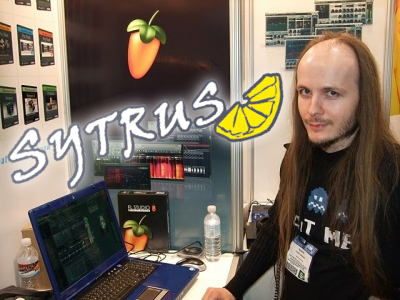
The man himself, Didier!!!
With the advent of Scale Workshop (https://sevish.com/scaleworkshop/), you can now feed any custom scale and output a .fnv for usage in either Sytrus or Harmor. This is actually fantastic for a few reasons:
You don't have to rely on external microtuning software which gets quite annoying after awhile
Sytrus and Harmor both respond to FL Studio's reference (concert) pitch, so other than 440 Hz you can specify anything like 460 Hz and it will affect all instances of Sytrus and Harmor. Therefore doing something like Wendy Carlos Alpha @ 466 Hz is really simple.
Sytrus can take advantage of this microtuning and have completely microtonal FM operators (which is the FIRST of any known synthesizer or FM synthesizer), along with varying pitch strengths. For instance let's say you wanted the pitch map to be 50% 12EDO and 50% Harmonic Series 8-16, well you can! Or let's say OP1 should be Wendy Carlos Alpha but OP2 should be Werckmeister III, well you can!
I have here an FL Studio project with some Sytrus instances that play three sequences to demonstrate the microtonal operator concept: Microtonal Sytrus Operators .flp
- WC Gamma acting on WC Gamma <-- no operator microtonality
- WC Gamma acting on WC Beta <-- some operator microtonality
- WC Gamma acting on WC Alpha <-- a lot more operator microtonality
Note: the more extreme areas of the octave become more distorted as the microtonal operators 'fight' the conflicting phases, but then as the frequencies become more similar the effect softens up a bit. This is because some notes for WC Alpha/Beta/Gamma are similar and some are dissimilar, which is why I chose these for demonstration.
.fnv File Pack
I've compiled all of my favourite tunings for usage with Sytrus and Harmor so you don't have to! What's included in the package are the following:
Microtonal:
- Wendy Carlos Alpha
- Wendy Carlos Beta
- Wendy Carlos Gamma
- Harmonic Series 8~16
- Harmonic Series 4~8
- Euler-Fokker genus 45
- Euler-Fokker genus 603
Note: Harmonic Series 4~8 and 5edo are 'almost' the same, with the exception that the Harmonic Series modifies some of the pitches it lands on but unless you're very sensitive to pitches most people 'probably' won't notice. I think the harmonic series sounds sweeter than equal temperament because.... it's equal temperament which is fairly boring. 5edo is less boring than 12edo due to the fact the pitches it lands on are not those found on 12edo, normally. With that said this is why I didn't include any equal temperaments in my .fnv pack, you're free to make those as you see fit but they're not at all as fun or interesting.
12 unequal divisions per octave (Unequal Temperament):
- Werckmeister III
- Bradley Lehman / Bach-Lehman III
- 1373 Organ Werckmeister
- Pythagorean (Wang Pho)
- Quarter comma meantone with 3 superpythagorean fifths aka "Rainbow"
Note: it can be REALLY difficult to hear the differences with some of these, Bradley Lehman's is so subtle that even to me it sounds virtually like 12edo.
Regarding the pack itself, it appears the same .fnv files work either for Sytrus or Harmor, so I've no idea why they're actually separate options. The ones included in the pack were all rendered for "Sytrus" but upon trying them in Harmor they also work fine. Who knows.
Generating Your Own .fnv Files
If you want to generate your own .fnv files for Sytrus or Harmless, head on to the Scale Workshop -- you'll get a spanking if you call it 'Sevish Workshop', according to Sevish ;)
Then either specify a tuning system with the prebuilt options or import a Scala .scl with existing data. One such website with a bunch of prebuilt .scl files is here: https://mizzan.de/scales. Afterwards just export whatever .fnv format you need.
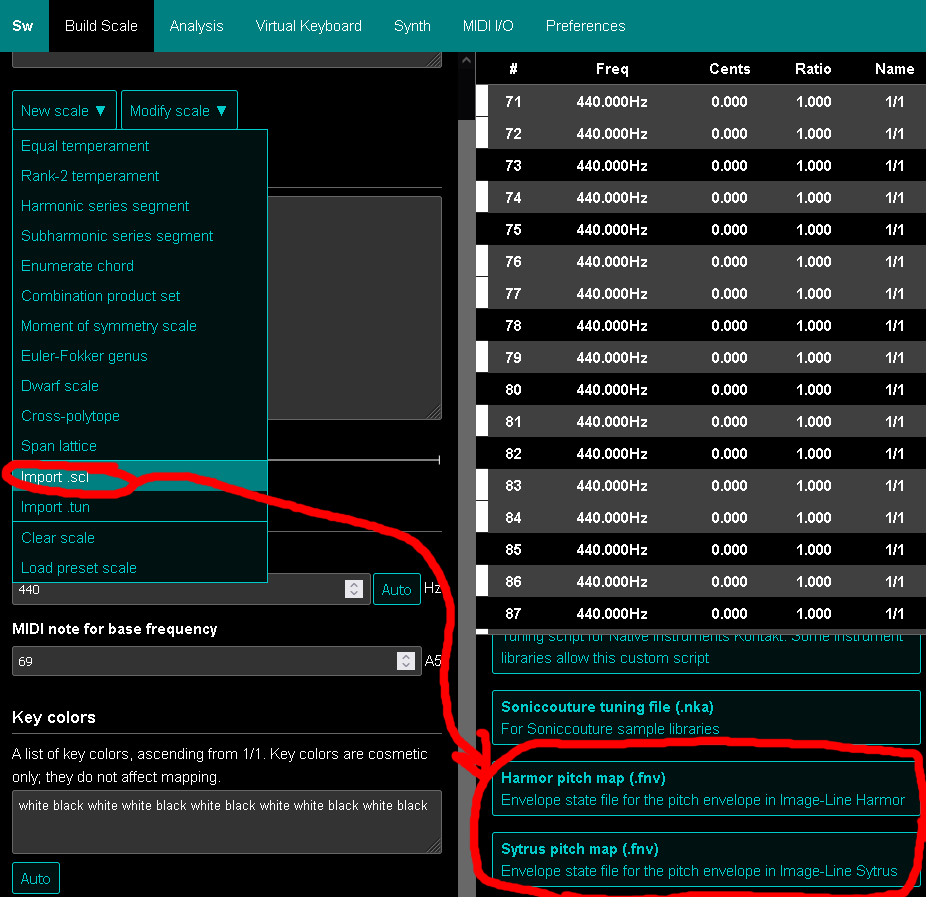
How to Apply .fnv Tunings to Sytrus
For applying the .fnv to Sytrus you need to satisfy all of these conditions:
#1 Actually importing the .fnv
#2 Setting the pitch envelope (PE) to 100% (if you want your custom tuning to operate normally, you can apply a custom pitch mapping and then leave at something lower for experimental tuning, I do in fact sometimes use this myself -- particularly with like the Harmonic Series applied across the key map at only a 25% strength)
#3 Applying the .fnv to every operator you want/need
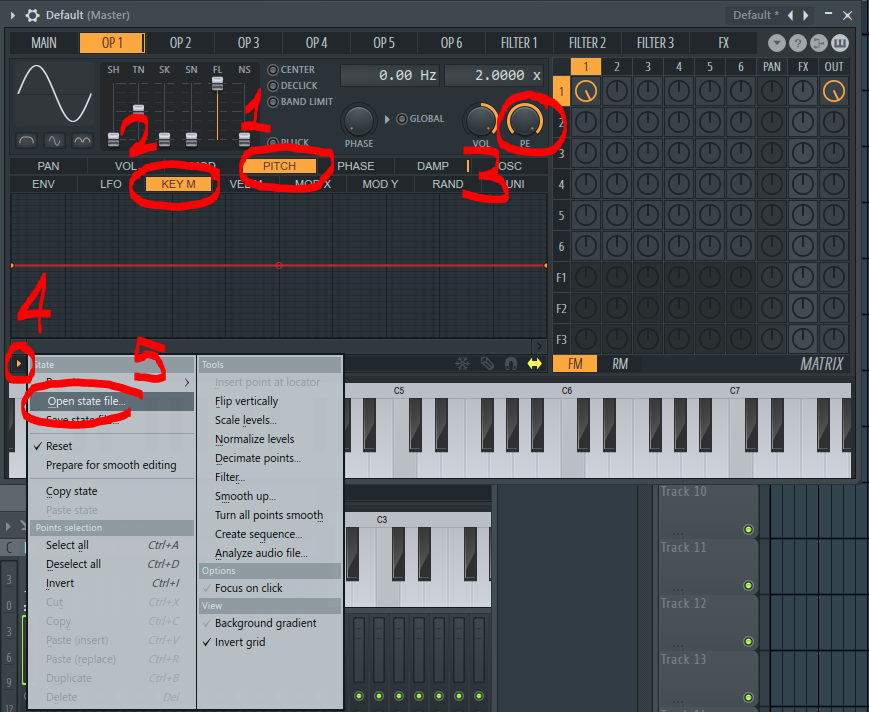
While it may seem like a lot of 'work' to apply the .fnv manually to each operator, this actually works to Sytrus' advantage allowing it to be the only FM synthesizer to support indepedent microtonal operators that still influence one another.
In FM synthesis you have an audible oscillator and then carrier(s) (both accomplished by operators), well as it turns out because each operator can have a completely different tuning system applied, you can have something like a Harmonic Series 8-16 operator with a carrier using Werckmeister III. What ends up happening is because the oscillators end up on wildly different pitches, it can cause even more chaotic/metallic FM distortion. Depending on what tuning system you use as a carrier and the strength of it, it can become more or less intense.
This behaviour was traditionally used in Sytrus prior to Scale Workshop by simply applying a pitch distortion envelope to the carrier which was less controlled of course. But now with accurate microtuning you can really take advantage of the relationship of microtonal operators to new levels.
Re-tuning Sytrus Without Pitch Mapping
As a little bonus, what happens if you want to use 12edo but want to leave it without specifying a pitch key map? This can be accomplished with a basic pitch curve and I've included a .ZIP with sample files demonstrating this:
Occassionally I will combine pitch curves, microtonal pitch keyboard mappings and change the reference/concert pitch, so it's still a useful tool even outside of "curing" 12edo from being boring.
The example has the pitch curve applied to the second pattern that plays. The pitch strength is just left to the default 25%, but you could adjust it to flavour. In order to apply it you need to specify it for the LFO:
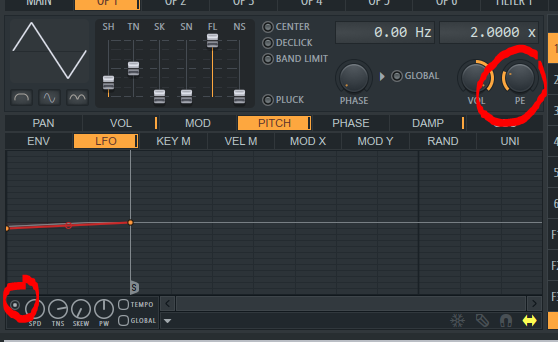
How to Apply .fnv Tunings to Harmor
For Harmor it's much more simple since there's only a single global keyboard (pitch) mapping:

Conclusions on Microtonality
I like to use a variety of the above mentioned techniques to experiment with new tunings and possibilities. Often times when composing with unknown tuning systems it's best just to experiment and use your ears. There is no known 'method' to decipher how complicated it can become or anticipate what might be possible since once you remove the restraints on pitch it's practically infinite (well, to the point of human hearing that can make out the differences).
For changing the concert pitch, away from 440 Hz, I generally like to use the following (it's best to play around with the microtonal or unequal temperament and see what 'fits' whatever you're doing best as not all tuning systems or FM synthesis patches will like all of these and some will kind of prefer or only sound right on 440 Hz:
- 460 Hz
- 445 Hz
- 443 Hz
- 438 Hz
- 407 Hz
I generally avoid 432 Hz or 448 Hz because I find them to be unpleasant, and I'm not the only one who thinks they sound horrible. 415 Hz and 465 Hz simply 'transpose' all of your notes either UP or DOWN and don't actually alter the tuning inbetween which is why I don't use those unless I'm lazy and don't feel like transposing my notes manually.
As to 'why use Sytrus' for microtonal music and patch programming, the microtonal operator concept is so cool that it's hard not to use that as an asset once you're aware of it. That's why Sytrus is now more appealing to me over any other software (or hardware) synthesizer when it comes to microtonality.
And to any Sytrus fans, here's a little throwback:
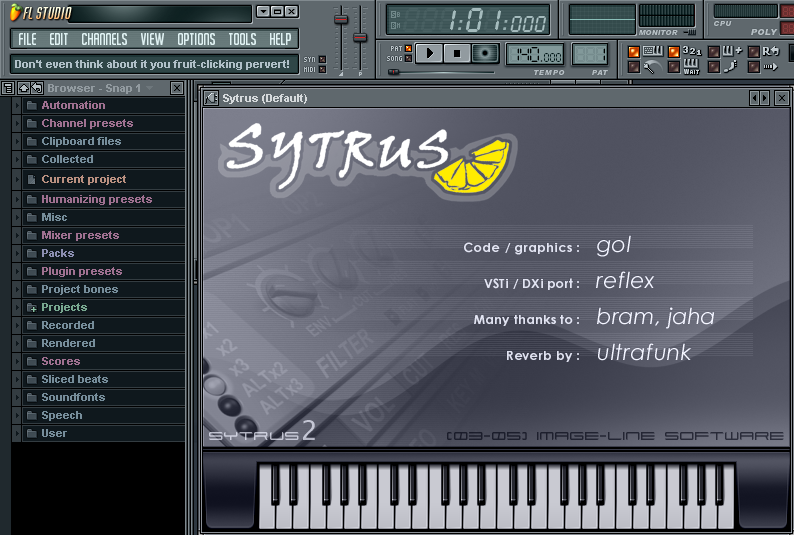
Don't even think about it you fruit-clicking pervert!




